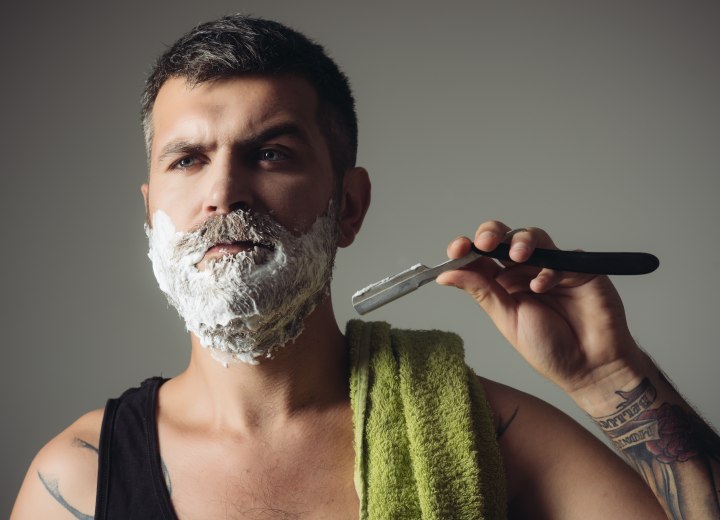How to Use a Straight Razor

A: Using a straight razor is a practice that is making a comeback as men are attempting to reclaim what was the manly art of the traditional shave. As it happens, it is also a far more economical option to grooming than using safety razors. There is a lot to learn with shaving with a straight razor, but below are some basics.
Most of today's straight razors are made of stainless steel, but true enthusiasts swear that the extra care required of a high-carbon steel blade is worth the effort if you want the best shave. Learn to care for your blade, keep is sharp and clean, free of rust, nicks and away from harsh chemicals or detergents and you'll be fine.
Preparation is everything: Lather is your best friend. Never let your lather get dry or become too thin or your razor will not shave you properly. Most serious straight razor shavers dispose of shave creams and foams, in favor of the shaving brush and bar-style shave cream.
Dip the brush in warm water and swirl it over the shave bar to generate a thick creamy lather which you then spread evenly over the area to be shaved. Let the lather sit on the whiskers for a few minutes to soften the beard hairs.
During this time, strop your razor to sharpen it. This is done by running the blade back and forth along the leather strop with smooth even pressure and strokes. Always keep the blade turned away from you when pulling it toward you in the stropping process and turned toward you when stropping away from you.
The pattern of movement is "strop-flip-strop-flip-strop-flip-etc.". Once you finish stropping the razor, apply another layer of shaving cream with your brush and you're ready to begin.
Practice, practice: Don't expect to start off doing a full shave with your razor on the first day. Take it nice and slow. Start with something simple, like trimming only your sideburns on your first time out and finish with your favorite safety razor, then as you get comfortable, move on to other areas. Taking things slow is the difference between a successful shave and cutting off your ear.
Remember that the angle of the cut is the key to error-free shaving. Hold the razor at a 30-degree angle to the surface of the skin and shave in the direction of the hair's growth. Apply another coating of lather and shave a second pass against the growth of the hair. (If this seems too tricky until you get some practice, skip the second pass.)
The shave kit: A complete shave kit needs the following. A shaving mug and boar-hair brush with shaving soap, straight-razor, mineral oil to coat the razor after cleaning (for storing), alcohol and cotton swabs (to remove the mineral oil prior to shaving), a styptic pencil or styptic powder (for nicks and minor cuts), small bandages, a good antiseptic/astringent toner (to remove residual shaving soap), and a soothing skin cream or lotion (to comfort the skin after shaving and relieve any dryness caused by the astringent).
You will also need to have your leather sharpening strop in the kit, and a honing stone for the annual sharpening, as well as a fine-grain steel wool to remove any rust spots as soon as they are noted.
©Hairfinder.com
See also:
Men's grooming
Basic styles for moustaches and beards